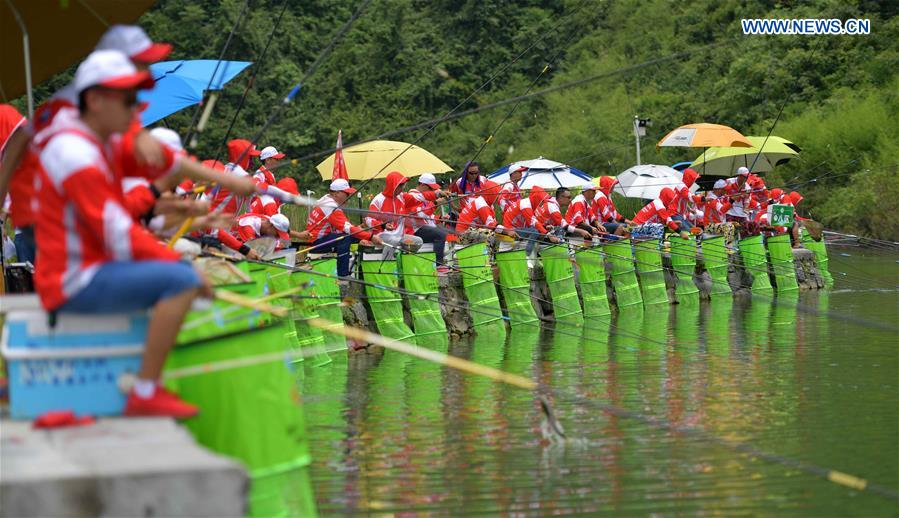Small Chinese town produces nearly 55 percent of world's fishing lines

Contestants take part in a riverside fishing competition at a tourism resort in Laifeng county of Enshi, central China's Hubei Province. (Xinhua/Yang Shunpi)
More than 70 percent of China's fishing lines and nearly 55 percent of the world's supply come from Geshan, a small town in Dongyang city, east China's Zhejiang Province. In the town, buildings with "fishing gear" signs can be seen everywhere, and the atmosphere around the fishing gear industry is quite strong. The local slogan is, "Wherever there is a sea, there are Geshan fishing lines."
What started as a humble business of fishing line processing in the town has evolved into a full-fledged fishing gear industrial chain, covering fishing lines, reels, bait, rods and more.
So how did this landlocked town become one of the leading fishing gear hubs? Geshan's rise can be traced back to an unlikely love story. In the 1980s, the output value of the fishing gear industry in the town barely exceeded 1 million yuan (about $137,523).
Lou Yajun, head of the Dongyang fishing gear industry association, recalled that the town's foray into the industry was sparked by a fishing gear merchant from Shanghai. While traveling by train during a business trip, the merchant met a woman from Geshan, and the two fell in love at first sight. The businessman followed her to Dongyang and set up a fishing line factory in Geshan, bringing the fishing line sector to the town. Over time, Geshan developed a flourishing fishing line cluster.
In 2024, Geshan had over 300 registered enterprises related to fishing gear. These companies generated more than 2 billion yuan in annual sales and employed over 5,000 people, with their products reaching more than 40 countries and regions.
The fishing line industry's breakthrough in Geshan came from technological innovation. Leading local companies invested tens of millions of yuan in research and development, refining dyeing processes and enhancing automation. To further reduce reliance on imported ultra-high-molecular-weight polyethylene, they established their own raw material factories, marking a significant step toward achieving self-sufficiency in raw materials.
To further boost the fishing gear industry, Geshan has integrated fishing gear with tourism. By hosting national fishing competitions, the town has attracted anglers and tourists alike, injecting new vitality and growth potential into the local economy.
In recent years, fishing has become a popular pastime for Chinese people. According to reliable data, China now has approximately 140 million active anglers and is a major producer of fishing gear in the world. By the end of 2023, the market value of China's fishing gear and related industries had exceeded 50 billion yuan, with over 636,000 registered companies related to fishing gear and nearly $1.8 billion in exports of fishing gear.
In addition, data from the China Angling Association shows that in 2024, the association held nearly 500 fishing competitions nationwide, attracting nearly 50,000 professional anglers, double the number recorded in 2019.
Photos
Related Stories
- Feature: China-Guinea Bissau fisheries partnership thrives as fleet sets season-first sail
- Winter fishing draws global tourists to China's frozen lakes
- Winter fishing festival opens at Zhenhu Lake in Taizhou, E China
- Ice fishing gains spotlight amid winter tourism boom
- In pics: winter fishing in Shenyang, NE China
Copyright © 2025 People's Daily Online. All Rights Reserved.









